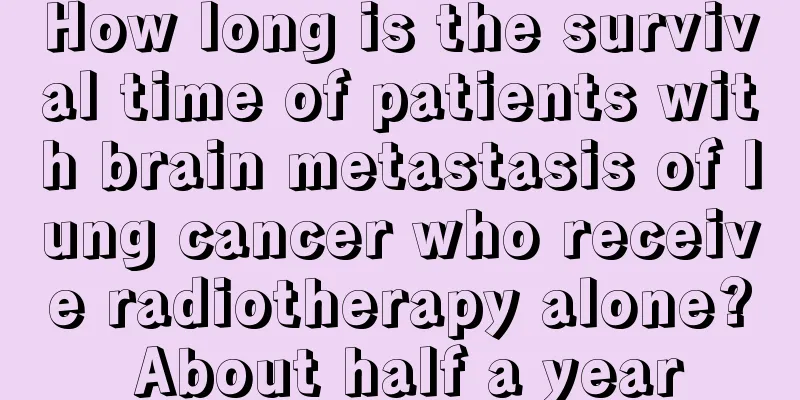Indications and contraindications for radical radiotherapy for nasopharyngeal carcinoma

|
In clinical practice, radiotherapy is often used to treat nasopharyngeal carcinoma, and radical radiotherapy is a type of radiotherapy. So, what are the characteristics of radical radiotherapy and its indications? Radical radiotherapy Radical radiotherapy refers to a treatment method that uses a tumor-lethal dose of radiation to completely eliminate the primary and metastatic lesions of malignant tumors. It is mainly used for tumors that are sensitive or moderately sensitive to radiation. The radiation dose used clinically is based on the radical dose required for different tumor tissues. Indications for radical radiotherapy 1. Those whose general condition is above average. 2. Patients whose pathological type of nasopharyngeal carcinoma is sensitive to radiation. 3. CT examination shows that the skull base bone destruction is not obvious or there is mild destruction. 4. CT or MRI examination shows no or only mild invasion of the nasopharynx. 5. The maximum diameter of cervical lymph node metastasis is less than 8cm, the lymph node mass is movable, and has not yet reached the supraclavicular fossa. 6. The patient has no other distant metastasis such as lung, liver, bone, etc. Contraindications to radical radiotherapy 1. Patients with poor general condition and cannot tolerate radiotherapy. 2. Patients with extensive distant metastasis. 3. Patients with diseases that may affect radiotherapy, such as severe heart or lung disease, severe anemia, and leukopenia. 4. Patients with concurrent acute infection. 5. Patients who have undergone radiotherapy cannot receive radiotherapy again if the following conditions exist: the nasopharynx and neck have received radical radiotherapy for less than one year; symptoms of radiation encephalopathy and spinal cord disease have occurred; the total course of nasopharyngeal radiotherapy has reached three times, and the total course of neck radiotherapy has reached two times. |
<<: Ultrasound imaging features of pancreatic cancer
>>: Breast cancer patients should eat daylily and lean meat porridge
Recommend
Redness, swelling and pain in the upper jaw
Today we are going to talk about redness, swellin...
Can milk improve sexual function and what to pay attention to
Nowadays, many male friends have a series of male...
How many years can breast cancer bone metastasis last
How long can breast cancer bone metastasis last? ...
Can low-grade bladder cancer be cured?
Bladder cancer is the most common malignant tumor...
The efficacy and function of polydextrose
Polydextrose is not sugar, but a food additive an...
Is the dull pain in the left upper abdomen for 2 months stomach cancer?
If no gastric lesions are found or their patholog...
The significance of glycosylated hemoglobin
The detection of glycosylated hemoglobin has attr...
Six things to note when buying food and putting it in the refrigerator
Office workers are accustomed to doing a lot of s...
Why does my waist hurt when I lie in bed
Symptoms of lower back pain as soon as you lie do...
How to remove black moles on the face?
Many people have moles on their faces or bodies. ...
Can I use a breast pump when weaning?
When it comes to weaning their babies, parents mu...
Should honey be stored in the refrigerator?
Many people are confused about the storage of hon...
Can dr chest X-ray examine the thymus?
In modern life, people rely on advanced medical t...
Can I eat chicken if I have chickenpox
We all know that chickenpox is a disease that req...
What are the research advances in early diagnosis of pancreatic cancer
Pancreatic cancer has a very poor prognosis due t...









